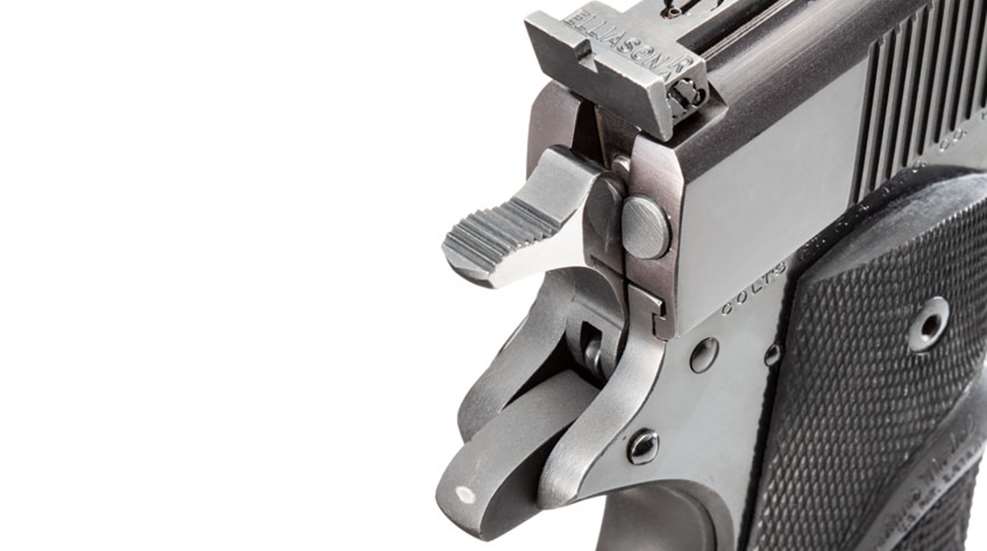
A lack of lubrication and/or failing internal components can result in a 1911’s hammer to fall to the half-cock notch as seen above.
I haven’t fired the gun that much until recently in some friendly competition at the local range, and even then, only about 1,000 rounds in the last few months. Lately, after about every three to four rounds fired, the hammer will fall to the half-cock position on its own. I can still fire it after fully cocking the hammer. The action cycles properly and ejects the spent cartridge every time.
What should I be looking for while cleaning the firearm, and should it go to a gunsmith for repairs? Thank you for your help.
Jeff Nettles, Via e-mail
The pistol you have sounds to be 40 to 50 years old, which is not a bad thing. Based on the information you provided, I can offer some suggestions to start troubleshooting the problem before taking it to a gunsmith for further evaluation and repair.
If the pistol hasn’t been dissembled down to the last screw, pin and spring, start there, assuming it falls within the scope of your capabilities. An owner’s manual or an online search of the specific model pistol you have should provide the disassembly and assembly instructions needed to do so.
Take it slow and easy so as not to lose any parts, particularly the springs, as replacement parts may be difficult to find.
Chances are the gunsmith who worked on the gun lubricated the inner workings thoroughly before assembling, testing and returning it to its original owner. Grease was and is often used on the firing mechanism for long-term lubrication of interacting parts. This includes the hammer, sear, disconnector, trigger etc., which likely are contributors to the problem you are currently having. Over time, grease tends to dry out, solidify and sometimes forms a buildup that actually interferes with the operation of the lubricated parts.
It is for this reason that I would suggest detail stripping the pistol to its individual components and thoroughly cleaning the gun down to bare metal. Once the old lubricants and all the accumulated firing residue is removed, it would be a good time to inspect each part for burrs, cracks and physical integrity. Normal wear is to be expected, but any parts that are suspect should be set aside with the thought of replacement (if they can be found—consider checking with Gunparts Corporation: gunpartscorp.com) or possibly repaired if parts aren’t available.
In a pistol of this age with an unknown round count, it would be prudent to replace the springs if new ones can be found. The sear spring and mainspring, in particular, apply the pressure to the sear and hammer to keep them engaged through the normal cycle of operation. If either or both of these springs are weak, the condition you are experiencing is a potential result.
Once the pistol is ready for reassembly, the bearing surfaces of the moving parts should be treated with a high-quality lubricant. A light application of grease on the hammer and sear assembly while treating the balance of the gun with a compatible (liquid) lubricant should serve to lubricate and protect the pistol until its next maintenance.
After the pistol is reassembled, perform a standard function check to ensure the safeties and mechanical operation of the gun are sound. When first firing the gun after reassembly, I recommend loading a dummy cartridge followed by a live cartridge in the magazine.
This will ensure the gun will cycle normally without firing the second shot if the hammer follows the slide forward after the first test shot is fired. By taking this precaution, if the hammer does follow, there is no danger since the hammer will fall on a dummy cartridge in the chamber. This would indicate the existing parts were worn beyond serviceability and replacement would be necessary.
Should this be the case after detail stripping, cleaning, inspection and lubricating the pistol, finding a gunsmith knowledgeable of and willing to work on your pistol would be the next step to restoring it back into working order.





































